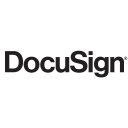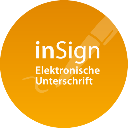Digitise documents: Everything you need to know
Digitising documents is more than just a trend. It is one of the biggest challenges of the digital transformation of companies and public authorities, all sectors combined. Paperless offices, the explosion of information volumes, mobility and teleworking are just some of the challenges facing organisations today.
What is behind the digitisation of documents? How are documents digitised? What are the benefits of switching to a totally paperless office? To better understand the challenges of digitised documents, the following information is essential.
What is the digitisation of documents?
Digitisation or dematerialisation of documents refers to the process of replacing a physical document (paper, usually) with a digital format.
The digitisation of documents is the first step towards a paperless office. However, a paperless or at least a paperless office goes beyond simply scanning or scanning in files and documents: documents need to be managed, processed and stored. The use of document management systems (DMS) and the implementation of digital processes are therefore necessary in order to establish an enterprise content management (ECM) strategy.
This transition from material to digitised data takes various forms. A dematerialised document can be scanned from a paper format or produced directly in digital form.
Which documents can be digitised?
In principle, all paper documents can be digitised and archived electronically, i.e:
- Accounting documents,
- annual financial statements,
- purchase receipts,
- insurance policies,
- invoices,
- contracts,
- personnel files,
- technical documents, etc.
Advantages of a paperless office
The digitisation of documents is an essential path to a paperless office and offers decisive advantages.
More space and organisation
Thousands of pages of contracts, invoices and accounting transactions are now archived on a USB stick, hard drive or CD.
The digitisation of documents offers a considerable logistical advantage. The electronic storage and management of documents on servers saves space.
Centralisation
Every document and piece of information is archived in the same place.
Solutions such as M-Files harmonise data from all internal tools: SharePoint, Exchange, OneDrive, OnBase, Dropbox, Google Drive, Salesforce, etc. All data is stored, categorised and archived in the tool.
Cost savings and increased productivity
Thanks to digitisation, you can find your documents much more quickly and easily than usual, which saves a considerable amount of time. Costs are also saved thanks to a significant reduction in paper storage.
Zeendoc is a DMS solution for storing, retrieving and making available all company information: With a powerful search engine and its intelligent data analysis, you can find all the information you are looking for in no time at all.
Shared usability
Within the company, employees can work together on the same document - if they have access - which strengthens teamwork.
With the online file sharing function, a work team can carry out coordinated activities, even from home. As documents are accessible anywhere and at any time, exchanges with customers, suppliers, accountants, etc. are smooth, avoiding unnecessary journeys and saving associated costs.
Security
Your scanned data and digital archives are secured in accordance with legal regulations and strict security requirements - from electronic signatures to digital archiving.
Digitise a document: Two methods
As already mentioned, two types of digitisation can be distinguished:
👉 " Native digitisation" involves documents that are created directly on digital media. Such electronic documents must have a certificate in order to be considered compliant (for the tax office, for example).
👉 " a posteriori digitisation" relates in particular to incoming paper documents. Such documents must pass through various phases, which are explained in the following section.
Legally compliant digitisation and archiving of documents: 3 phases
The GoBD (principles for the proper management and storage of books, records and documents in electronic form and for data access) specify how companies can legally digitise their paper documents.
1 - The scanning process
Section "9.3 Electronic capture of paper documents" details the scanning process. The scanning process involves scanning the original paper document (front and back) to obtain its digital copy and generate a usable file for integration into the system, which would be possible with OCR text recognition .
According to the GoBD, companies must document the scanning process, i.e. create a protocol that explains who is authorised to scan, when scanning can take place, in what quality, etc. The content or image match should also be documented for each scanned file.
2 - Archiving
The scanned documents must then be archived, i.e. stored long-term and as unalterably as possible. Archiving is explained in section 9.2. It is an essential component for electronic documents.
For commercial or business letters and accounting documents in paper form, the scan result must match the original so that it can be stored. Of course, it must be possible to prove this.
After individual indexing, all employees can access and change these specific files regardless of their location.
3 - Immutability
The content of digital documents subject to retention must not be changed. If companies change the content, the change must be logged.
The use of a certification procedure guarantees that the digitally copied document (e.g. PDF file) corresponds to its paper original. One solution for this would be the electronic signature.
Legally compliant digital archiving
Professional tools are required to store scanned documents as digital files:
- an electronic safe to secure the data by giving it legal value,
- a solution that enables the electronic signature of documents, authenticating the identity of the signatory.
For a managing director, the legal value of an electronic signature can be a concern.
To ensure the legal validity of an electronic signature, use a trusted third party! This is a certification authority that is itself certified by the state, fulfils all requirements and meets the highest European security standards.
With the help of solutions, you can sign your digital documents and provide legally compliant proof of your documents.
Yousign: Our favourite
With Yousign, benefit from a simple and customisable electronic signature solution that guarantees the security and confidentiality of your digital documents.
Advantages of Yousign:
- eIDAS and ETSI certified solution;
- electronic safe to guarantee secure electronic archiving;
- Data is hosted on a server in the EU (GDPR compliant);
- Yousign adapts perfectly to your business processes, your teams and the structure of your organisation.

Yousign
DocuSign: The international
DocuSign simplifies signature processes for companies and organisations. Recognised as a trusted third party, DocuSign is authorised to issue digital certificates as well as e-seals and time stamps.
Advantages of DocuSign:
- eIDAS and ETSI certified solution;
- Digital agreements are accessible from anywhere in the world, with more than 85 million users in 188 countries and a user interface available in 43 languages;
- Various offers for electronic signatures, in the cloud or on premise.

DocuSign
InSign: Paperless and legally compliant
With InSign, you can sign, send and manage your documents legally and securely from anywhere.
Advantages of InSign:
- GDPR and eIDAS compliant;
- Made in Germany and TÜV-certified;
- Various offers: Solutions as SaaS, in the cloud or on-premise.

inSign
On the road to a paperless strategy
Where do you start when launching a dematerialisation project within an organisation? The starting point seems to be the digitisation of existing documents. It will then be necessary to rethink the processes associated with this approach: finance, accounting, HR management, etc. All workflows need to be revisited before they can be automated under the best possible conditions, especially using professional tools.
From the collaborative platform to an advanced DMS tool, via a reliable electronic signature solution, you are accompanied by BtoB software solutions. These solutions are at your disposal to get the process started, offering you compliance, reliability and ease.
And you, are you ready to drive your digital transformation?
Article translated from German